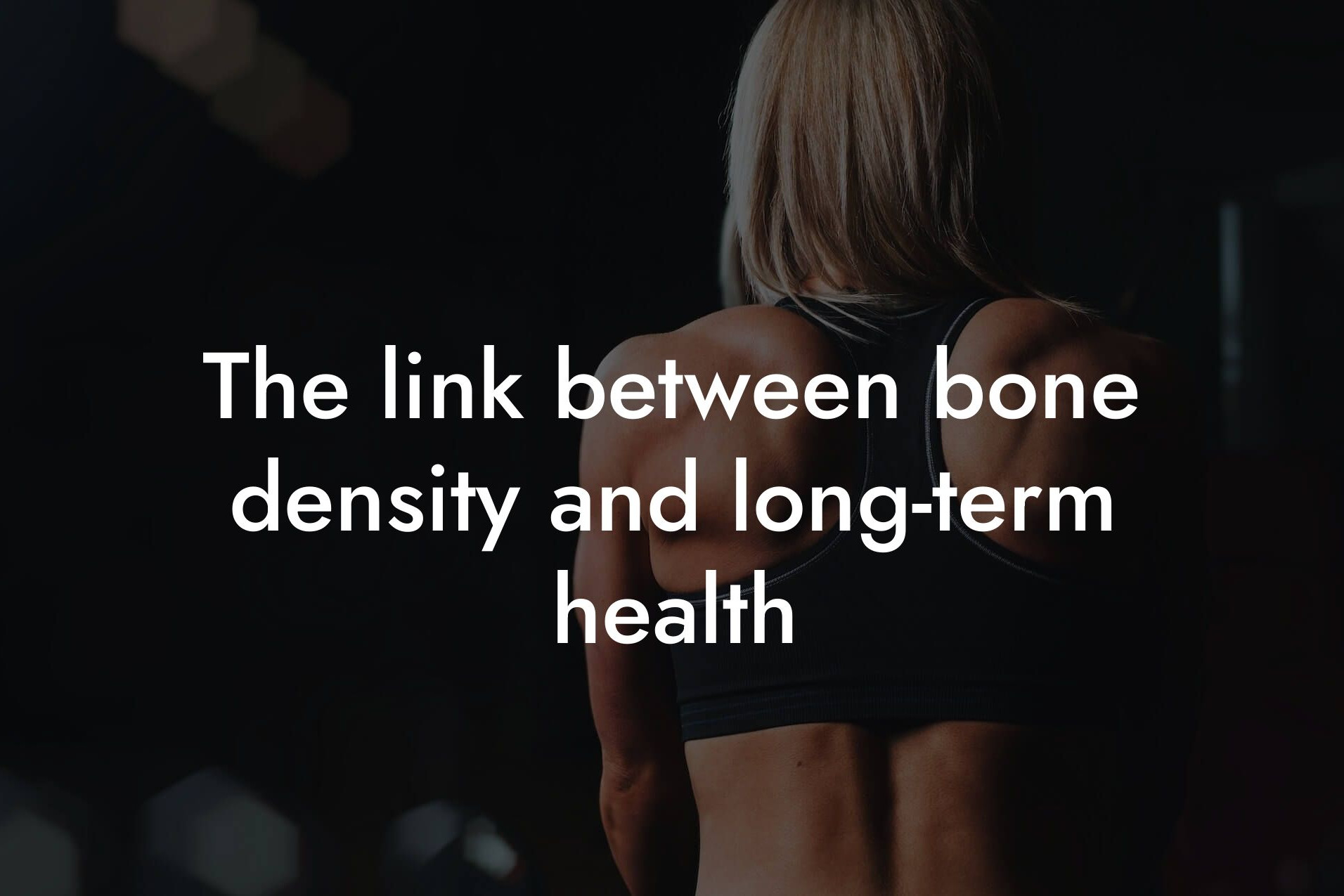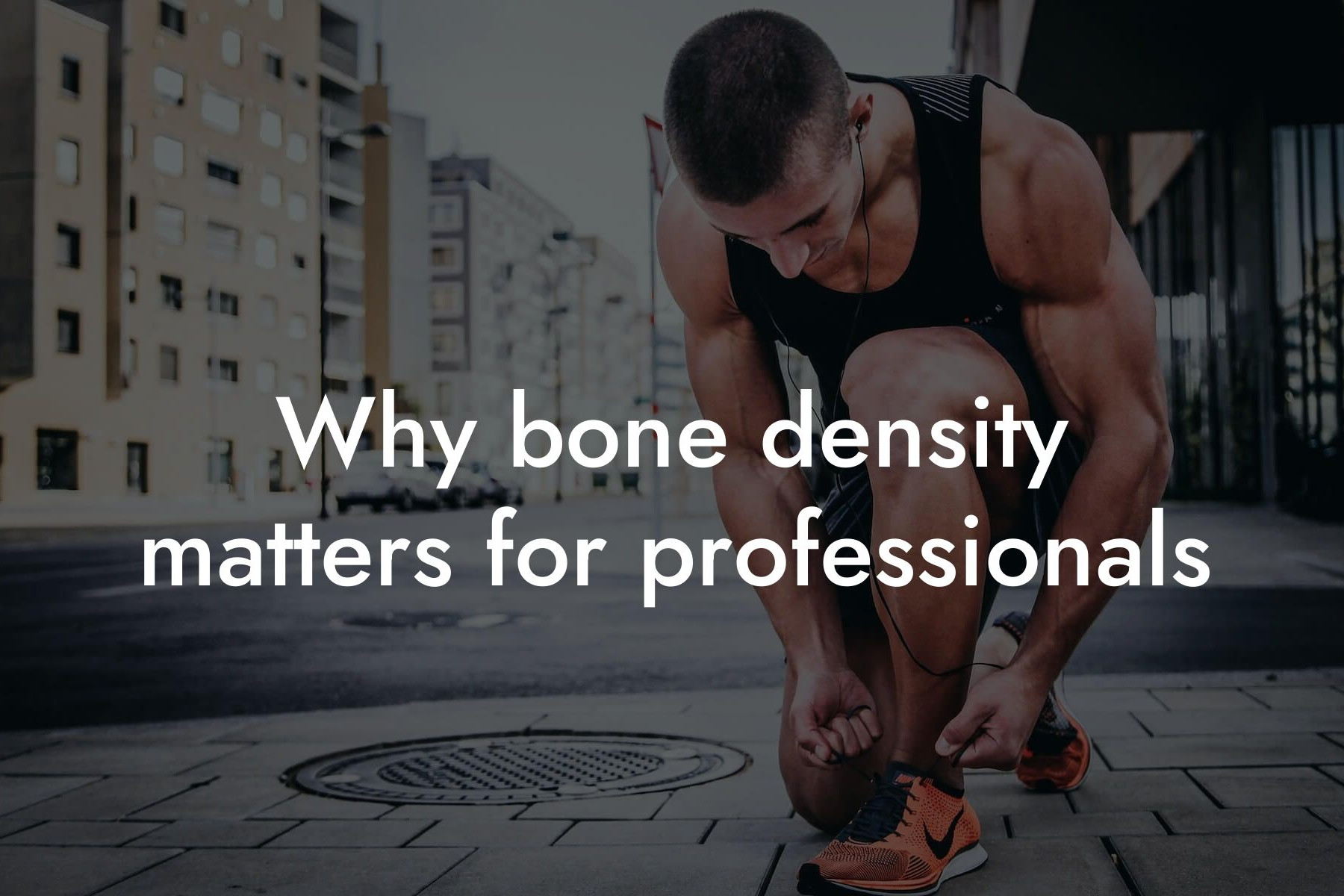Osteoporosis is a silent yet debilitating condition that affects millions of people worldwide. It is a major public health concern, particularly among high-earning professionals who lead busy lives and may neglect their physical health. As a professional interested in maintaining a healthy physique and bone density, it is essential to understand osteoporosis, its risks, and how to prevent or manage it.
Table of Contents
What is Osteoporosis?
Osteoporosis is a bone disorder characterized by a decrease in bone mass and density, leading to fragile and porous bones. This condition occurs when the body loses too much bone, makes too little bone, or both. As a result, the bones become weak and may break easily, even with minor falls or bumps.
Causes and Risk Factors
Osteoporosis can be caused by a combination of genetic, lifestyle, and hormonal factors. Some of the common risk factors include:
• Age: Osteoporosis is more common among older adults, especially those over 65 years.
• Gender: Women are more likely to develop osteoporosis than men, especially after menopause.
• Family history: Having a family history of osteoporosis increases your risk.
• Low calcium and vitamin D intake: A diet lacking essential nutrients can contribute to osteoporosis.
• Sedentary lifestyle: A lack of physical activity can lead to weak bones.
• Smoking and excessive alcohol consumption: These habits can increase the risk of osteoporosis.
Signs and Symptoms
Osteoporosis is often asymptomatic in its early stages, but as the condition progresses, you may experience:
• Back pain: Caused by compression fractures in the spine.
• Loss of height: As the spine compresses, you may lose inches over time.
• Stooped posture: Weakened bones can lead to a curved spine.
• Fractures: Osteoporotic bones are more prone to breaks, especially in the hips, spine, and wrists.
Diagnosis and Testing
If you're at risk of osteoporosis or experiencing symptoms, your healthcare provider may recommend the following tests:
• Dual-Energy X-ray Absorptiometry (DEXA) scan: Measures bone density in the hips and spine.
• Bone mineral density (BMD) test: Evaluates bone density in the entire skeleton.
• X-rays: Can help identify fractures or bone damage.
• Blood tests: May be used to rule out underlying medical conditions.
Treatment and Management
Treatment for osteoporosis typically involves a combination of medications, lifestyle changes, and exercise. Your healthcare provider may recommend:
• Bisphosphonates: Medications that slow bone loss and increase bone density.
• Hormone replacement therapy (HRT): May be prescribed for women with menopause-related osteoporosis.
• Calcium and vitamin D supplements: Essential for maintaining strong bones.
• Exercise programs: Weight-bearing exercises, such as walking or strength training, can help improve bone density.
• Fall prevention: Taking steps to reduce the risk of falls, such as removing tripping hazards and improving lighting.
Lifestyle Changes for Osteoporosis Prevention
Preventing osteoporosis requires a proactive approach to your lifestyle. Make the following changes to reduce your risk:
• Maintain a healthy diet: Rich in calcium, vitamin D, and other essential nutrients.
• Engage in regular exercise: Aim for weight-bearing and resistance exercises.
• Quit smoking and limit alcohol consumption.
• Get enough sleep: Aim for 7-8 hours of sleep per night.
• Manage stress: Chronic stress can contribute to osteoporosis.
Importance of Bone Density Testing
Bone density testing, such as DEXA scans, is crucial for identifying osteoporosis and monitoring its progression. Regular testing can help:
• Identify osteoporosis early: Allowing for prompt treatment and prevention of further bone loss.
• Monitor treatment effectiveness: Tracking changes in bone density over time.
• Optimize exercise and nutrition: Personalized recommendations based on bone density results.
At Tano Performance Group, we understand the importance of bone density testing and offer comprehensive body assessments using our state-of-the-art DEXA machine. Our expert team will provide you with a detailed report and personalized recommendations to help you achieve your physical goals and maintain optimal bone health.
Osteoporosis is a serious condition that can have a significant impact on your quality of life. By understanding the causes, risk factors, signs, and symptoms, you can take proactive steps to prevent or manage osteoporosis. Remember, early detection and treatment are key to maintaining strong, healthy bones. Take control of your bone health today and schedule a body assessment with Tano Performance Group.
Frequently Asked Questions
What is osteoporosis?
Osteoporosis is a bone disease characterized by a decrease in bone density and mass, leading to brittle and fragile bones. This can increase the risk of fractures, particularly in the hips, spine, and wrists. Osteoporosis can be a silent disease, as it may not cause any symptoms until a bone is broken.
What are the risk factors for osteoporosis?
Risk factors for osteoporosis include being over 50 years old, being female, having a family history of osteoporosis, being thin or having a small frame, being inactive, smoking, and having certain medical conditions such as rheumatoid arthritis or thyroid disorders.
How common is osteoporosis?
Osteoporosis is a major public health concern, affecting an estimated 200 million people worldwide. In the United States alone, it is estimated that over 54 million people have osteoporosis or low bone mass, putting them at risk for osteoporosis.
What are the symptoms of osteoporosis?
The symptoms of osteoporosis can be subtle and may not appear until a bone is broken. Common symptoms include back pain, loss of height, stooped posture, and fractures. In some cases, osteoporosis may not cause any symptoms at all.
How is osteoporosis diagnosed?
Osteoporosis is typically diagnosed using a bone density test, such as a dual-energy X-ray absorptiometry (DXA) scan. This test measures bone density in the hips and spine, and can help identify osteoporosis or low bone mass.
What is the difference between osteoporosis and osteopenia?
Osteopenia is a condition where bone density is lower than normal, but not low enough to be classified as osteoporosis. Osteopenia is often considered a precursor to osteoporosis, and individuals with osteopenia are at increased risk of developing osteoporosis.
Can osteoporosis be prevented?
While osteoporosis cannot be completely prevented, there are steps that can be taken to reduce the risk. These include getting enough calcium and vitamin D, engaging in regular exercise, avoiding smoking and excessive alcohol consumption, and getting regular bone density tests.
What are the treatment options for osteoporosis?
Treatment options for osteoporosis include medications such as bisphosphonates, hormone therapy, and calcitonin, as well as lifestyle changes such as increased calcium and vitamin D intake, exercise, and fall prevention strategies.
What role does calcium play in bone health?
Calcium is an essential nutrient for bone health, and is necessary for building and maintaining strong bones. Calcium can be obtained through diet, supplements, or a combination of both.
What role does vitamin D play in bone health?
Vitamin D is important for bone health, as it helps the body absorb calcium. Vitamin D can be obtained through sun exposure, diet, or supplements.
How does exercise affect bone health?
Regular exercise, especially weight-bearing and resistance exercises, can help improve bone density and reduce the risk of osteoporosis. Exercise can also help improve balance and reduce the risk of falls.
What is the relationship between osteoporosis and menopause?
Menopause is a significant risk factor for osteoporosis, as the decrease in estrogen levels during menopause can lead to a rapid decline in bone density.
Can men get osteoporosis?
Yes, men can get osteoporosis. While osteoporosis is more common in women, men are also at risk, especially after the age of 70.
How does osteoporosis affect daily life?
Osteoporosis can have a significant impact on daily life, making everyday activities such as walking, bending, or lifting difficult. It can also lead to feelings of isolation, depression, and anxiety.
What are the complications of osteoporosis?
Complications of osteoporosis can include fractures, chronic pain, disability, and even death. Osteoporosis can also increase the risk of other health problems, such as pneumonia and blood clots.
Can osteoporosis be reversed?
While osteoporosis cannot be completely reversed, treatment and lifestyle changes can help improve bone density and reduce the risk of fractures.
What is the role of nutrition in bone health?
A diet rich in calcium, vitamin D, and other essential nutrients is important for bone health. A healthy diet can help support bone growth and density, and reduce the risk of osteoporosis.
How can I reduce my risk of osteoporosis?
To reduce your risk of osteoporosis, get enough calcium and vitamin D, engage in regular exercise, avoid smoking and excessive alcohol consumption, and get regular bone density tests. Maintaining a healthy weight and managing underlying medical conditions can also help.
What is the importance of bone density testing?
Bone density testing is important for identifying osteoporosis or low bone mass, and can help determine the risk of fractures. It can also monitor the effectiveness of treatment and lifestyle changes.
How often should I get a bone density test?
The frequency of bone density testing depends on individual risk factors and medical history. Generally, women over 65 and men over 70 should get a bone density test every 2-3 years.
What are the benefits of early detection and treatment of osteoporosis?
Early detection and treatment of osteoporosis can help reduce the risk of fractures, improve bone density, and reduce the risk of complications. It can also improve quality of life and reduce healthcare costs.
How can I get support for osteoporosis?
Support for osteoporosis can be obtained through healthcare providers, support groups, and online resources. It's important to talk to a healthcare provider about any concerns or questions about osteoporosis.
Here are some related articles you might love...
- The link between bone density and long-term health
- Why bone density matters for professionals
- Bone density and aging: What professionals need to consider
- How to improve bone density naturally
- DEXA scan for bone density: What you need to know
- The role of calcium and vitamin D in bone health
- Best exercises for increasing bone density
- How stress affects bone density
- Nutrition tips for stronger bones
Zak Faulkner
Zak Faulkner is a leading authority in the realm of physical health and body composition analysis, with over 15 years of experience helping professionals optimise their fitness and well-being. As one the experts behind Tano Performance Group, Zak has dedicated his career to providing in-depth, science-backed insights that empower clients to elevate their physical performance and overall health.
With extensive knowledge of DEXA technology, Zak specializes in delivering comprehensive body assessments that offer precise data on body fat, muscle mass, bone density, and overall physique. His expertise enables individuals to make informed decisions and achieve their fitness goals with accuracy and confidence. Zak’s approach is rooted in a deep understanding of human physiology, combined with a passion for helping clients unlock their full potential through personalised strategies.
Over the years, Zak has earned a reputation for his commitment to excellence, precision, and client-focused service. His guidance is trusted by top professionals who demand the best when it comes to their health. Whether advising on fitness programs, nutritional strategies, or long-term wellness plans, Zak Faulkner’s insights are a valuable resource for anyone serious about taking their health and fitness to the next level.
At Tano Performance Group, Zak continues to lead our Content Team revolutionising how professionals approach their physical health, offering unparalleled expertise that drives real results.




